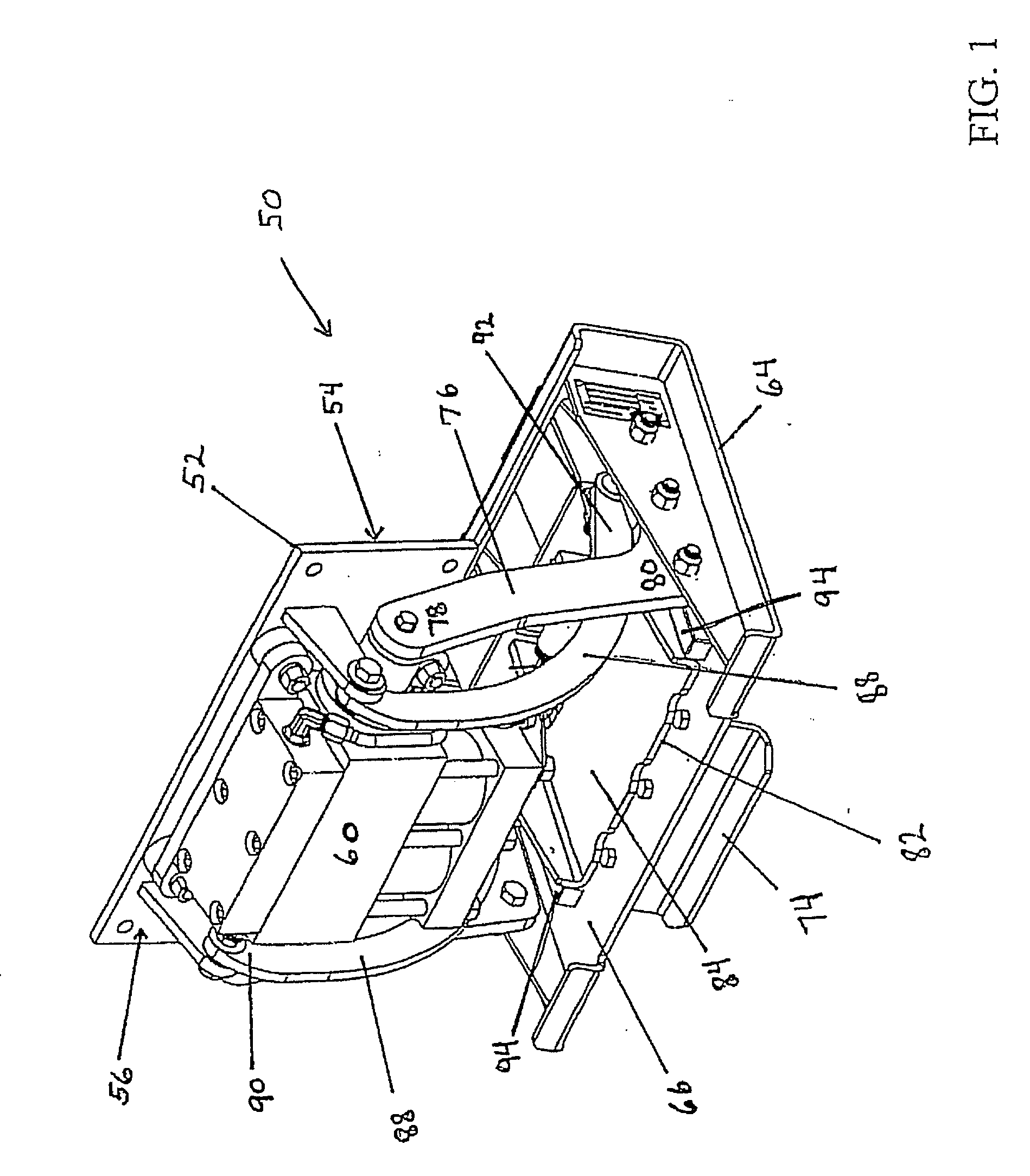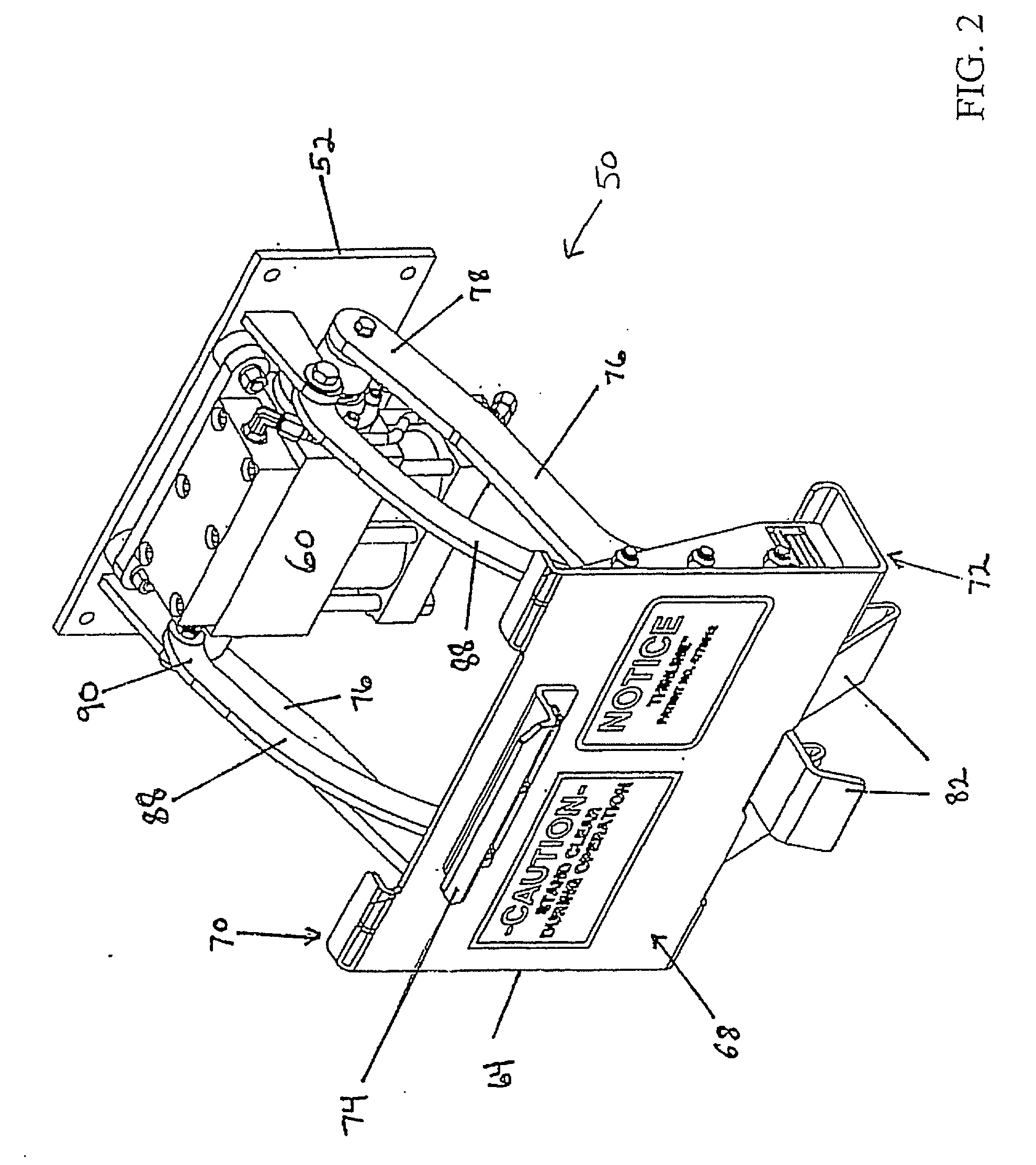Refuse cart lifter with an improved range of rotation
a technology of lifting device and refuse container, which is applied in the direction of packaging, loading/unloading, packaging bottles, etc., can solve the problems of affecting the efficiency of refuse collection, and affecting the safety of rear-loading refuse collection vehicle drivers, so as to improve the operating envelope, improve the efficiency of refuse collection, and save time and energy
- Summary
- Abstract
- Description
- Claims
- Application Information
AI Technical Summary
Benefits of technology
Problems solved by technology
Method used
Image
Examples
first embodiment
[0058]FIG. 3 depicts the present refuse cart 50 lifter shown in a dumping position, which is the extreme opposite of the retracted position depicted in FIG. 1. In FIG. 3, the motor 60 has further rotated rotatable shaft 62 and attached lifting arms 76 preferably past a vertical position. The resulting angle of the first end 78 of lifting arms 76 away from the back side 54 of the baseplate 52 (see FIG. 4) or towards the hopper if the present refuse cart lifter 50 is mounted on a refuse collection vehicle (see FIG. 17), combined with the design of the lifting arms 76 that directs the second end 80 of lifting arms 76 even further away from the back side 54 of the baseplate 52 serves to swing faceplate 64 to a position above and substantially behind baseplate 52. Lifting arm 76 design directs the second end 80 of lifting arms 76 away from the back side 54 of the baseplate 52 (see FIG. 1) by offsetting the second end 80 of lifting arm 76 from lifting arm 76 using, for example, a curve or...
second embodiment
[0071] the present refuse cart lifter 150 is depicted in FIGS. 18 through 23. FIG. 18 depicts refuse cart lifter 150 positioned in a retracted position. The motor 160 is affixed to the front side 156 of the baseplate 152. The motor depicted is a dual rack, single pinion hydraulic actuator capable of 210 degrees of rotation. The rear side 154 of baseplate 152 can be attached to a refuse collection vehicle or a large refuse collection container. Dual lifting arms 176 are attached to the rotatable shaft 162 (see FIG. 20) of motor 160 at a first end 178 of the lifting arms 176. The second end 180 (see FIG. 23) of lifting arms 176 are attached to faceplate 164.
[0072] As lifter 150 lifting arms 176 are rotated, attached faceplate 164 swings in a corresponding arc as lifter 150 is either extended (see FIGS. 19 and 20) or retracted (see FIG. 18), similar to the operation of the first embodiment relating to refuse cart lifter 50. Unlike the first embodiment of the present lifter 50 that uses...
PUM
 Login to View More
Login to View More Abstract
Description
Claims
Application Information
 Login to View More
Login to View More - R&D
- Intellectual Property
- Life Sciences
- Materials
- Tech Scout
- Unparalleled Data Quality
- Higher Quality Content
- 60% Fewer Hallucinations
Browse by: Latest US Patents, China's latest patents, Technical Efficacy Thesaurus, Application Domain, Technology Topic, Popular Technical Reports.
© 2025 PatSnap. All rights reserved.Legal|Privacy policy|Modern Slavery Act Transparency Statement|Sitemap|About US| Contact US: help@patsnap.com



